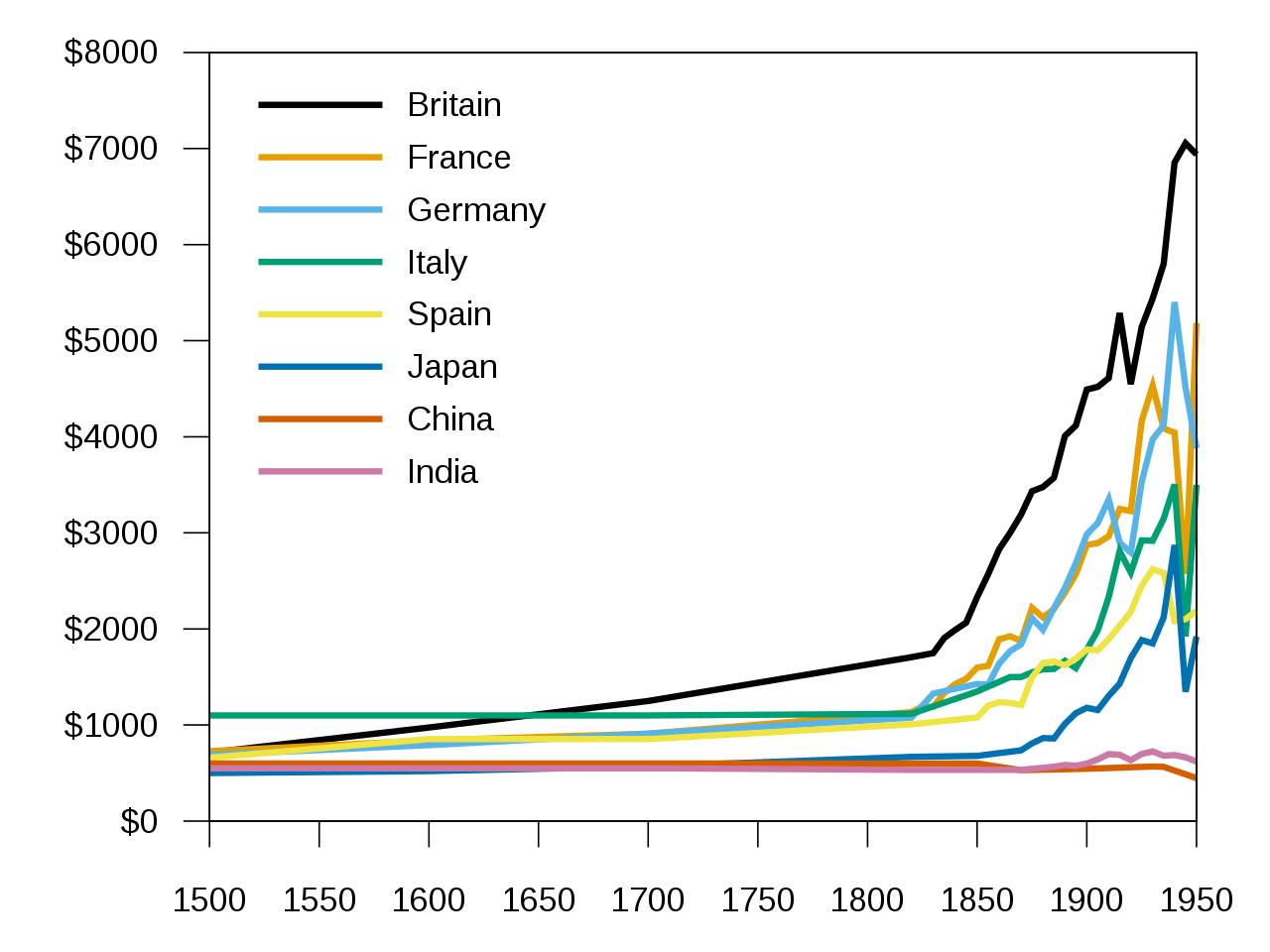I'm reading the Wealth of Nations. Smith explains in Book One that wages for labor are determined not by how wealthy a nation is but rather by its rate of growth. At the end of chapter seven he introduces the topic with this:
First, I shall endeavour to explain what are the circumstances which naturally determine the rate of wages, and in what manner those circumstances are affected by the riches or poverty, by the advancing, stationary, or declining state of the society.
Smith, Adam. The Wealth of Nations (p. 24). Neeland Media LLC. Kindle Edition.
In chapter 8 he goes into detail on this. Introducing an extensive section of examples of advancing, stagnating, and declining societies and the relative hight, mediocrity, and poverty of wages (respectively), he says:
It is not the actual greatness of national wealth, but its continual increase, which occasions a rise in the wages of labour. It is not, accordingly, in the richest countries, but in the most thriving, or in those which are growing rich the fastest, that the wages of labour are highest.
Smith, Adam. The Wealth of Nations (pp. 26-27). Neeland Media LLC. Kindle Edition.
His picture of the stagnating society looks grim enough, with the average laborer having barely enough to feed his family:
If by digging the ground a whole day he can get what will purchase a small quantity of rice in the evening, he is contented. The condition of artificers is, if possible, still worse. Instead of waiting indolently in their work-houses for the calls of their customers, as in Europe, they are continually running about the streets with the tools of their respective trades, offering their services, and, as it were, begging employment.
Smith, Adam. The Wealth of Nations (p. 27). Neeland Media LLC. Kindle Edition.
His picture of a declining society is hard for a sympathetic person to read:
The lowest class being not only overstocked with its own workmen, but with the overflowings of all the other classes, the competition for employment would be so great in it, as to reduce the wages of labour to the most miserable and scanty subsistence of the labourer. Many would not be able to find employment even upon these hard terms, but would either starve, or be driven to seek a subsistence, either by begging, or by the perpetration perhaps, of the greatest enormities. Want, famine, and mortality, would immediately prevail in that class, and from thence extend themselves to all the superior classes, till the number of inhabitants in the country was reduced to what could easily be maintained by the revenue and stock which remained in it, and which had escaped either the tyranny or calamity which had destroyed the rest.
Smith, Adam. The Wealth of Nations (p. 28). Neeland Media LLC. Kindle Edition.
I am a layman to economics. My question to the community is: is this still generally accepted economic theory? Can a "static" society not expect high wages for labor but rather expect generally decreasing wages for labor until they fall to barely subsistence levels? Can we only expect high wages for labor in countries with every increasing productivity? I know this is science, so you kind of have to take it as it is, but I admit this seems grim to me.
